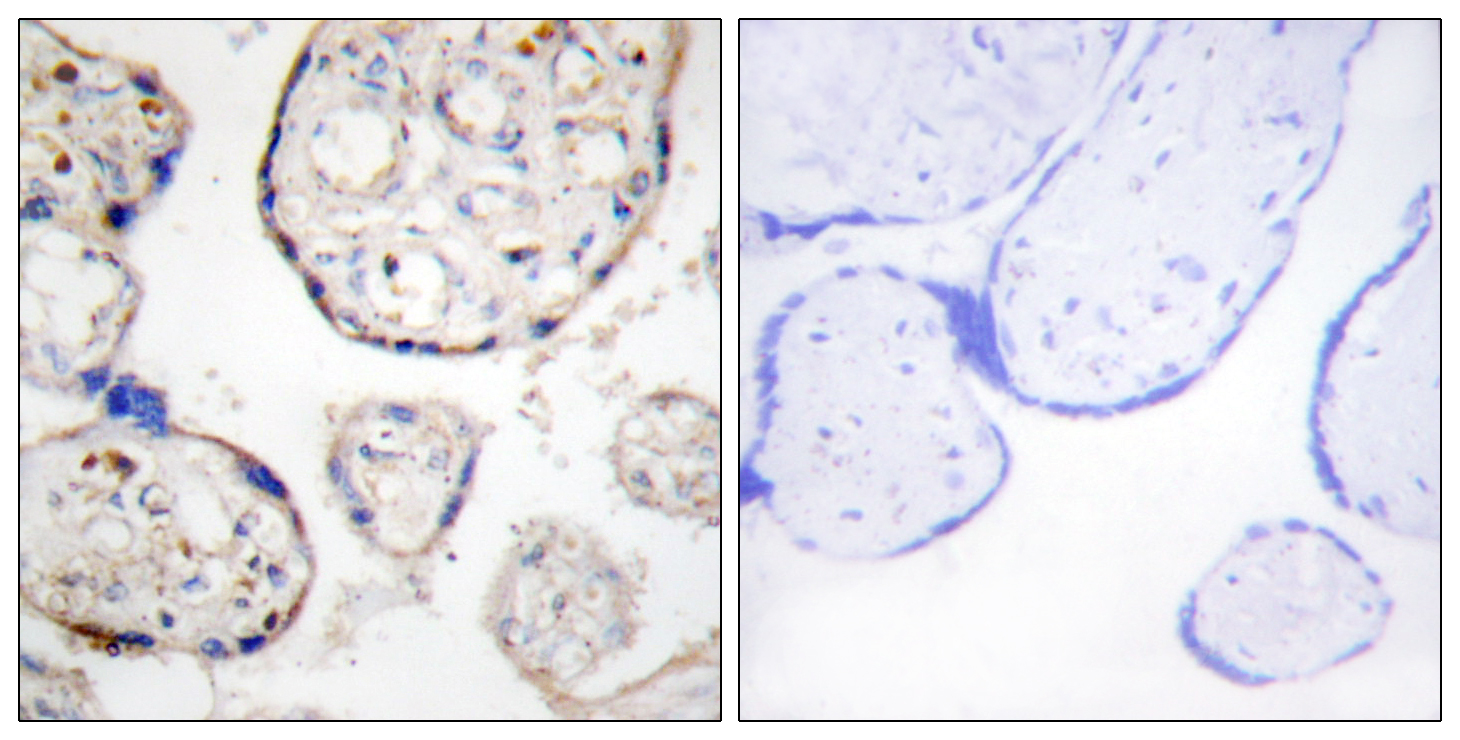STAMP2 Polyclonal Antibody
- Catalog No.:YT4436
- Applications:IHC;IF;ELISA
- Reactivity:Human;Rat;Mouse;
- Target:
- STAMP2
- Gene Name:
- STEAP4
- Protein Name:
- Metalloreductase STEAP4
- Human Gene Id:
- 79689
- Human Swiss Prot No:
- Q687X5
- Mouse Swiss Prot No:
- Q923B6
- Immunogen:
- The antiserum was produced against synthesized peptide derived from human STEAP4. AA range:201-250
- Specificity:
- STAMP2 Polyclonal Antibody detects endogenous levels of STAMP2 protein.
- Formulation:
- Liquid in PBS containing 50% glycerol, 0.5% BSA and 0.02% sodium azide.
- Source:
- Polyclonal, Rabbit,IgG
- Dilution:
- IHC 1:100 - 1:300. IF 1:200 - 1:1000. ELISA: 1:20000. Not yet tested in other applications.
- Purification:
- The antibody was affinity-purified from rabbit antiserum by affinity-chromatography using epitope-specific immunogen.
- Concentration:
- 1 mg/ml
- Storage Stability:
- -15°C to -25°C/1 year(Do not lower than -25°C)
- Other Name:
- STEAP4;STAMP2;TNFAIP9;Metalloreductase STEAP4;Six-transmembrane epithelial antigen of prostate 4;SixTransMembrane protein of prostate 2;Tumor necrosis factor; alpha-induced protein 9
- Molecular Weight(Da):
- 52kD
- Background:
- STEAP4 metalloreductase(STEAP4) Homo sapiens The protein encoded by this gene belongs to the STEAP (six transmembrane epithelial antigen of prostate) family, and resides in the golgi apparatus. It functions as a metalloreductase that has the ability to reduce both Fe(3+) to Fe(2+) and Cu(2+) to Cu(1+), using NAD(+) as acceptor. Studies in mice and human suggest that this gene maybe involved in adipocyte development and metabolism, and may contribute to the normal biology of the prostate cell, as well as prostate cancer progression. Alternatively spliced transcript variants encoding different isoforms have been found for this gene. [provided by RefSeq, Apr 2011],
- Function:
- cofactor:FAD.,function:Metalloreductase that has the ability to reduce both Fe(3+) to Fe(2+) and Cu(2+) to Cu(1+). Uses NAD(+) as acceptor.,induction:Up-regulated by androgens, including testosterone and dihydrotestosterone.,similarity:Belongs to the STEAP family.,similarity:Contains 1 ferric oxidoreductase domain.,tissue specificity:Ubiquitous. Highly expressed in placenta, lung, heart and prostate. Detected at lower levels in liver, skeletal muscle, pancreas, testis and small intestine.,
- Subcellular Location:
- Cell membrane ; Multi-pass membrane protein . Golgi apparatus membrane ; Multi-pass membrane protein . Early endosome membrane ; Multi-pass membrane protein .
- Expression:
- Ubiquitous. Highly expressed in adipose tissue. Expressed in placenta, lung, heart and prostate. Detected at lower levels in liver, skeletal muscle, pancreas, testis and small intestine. Highly expressed in joints of patients with rheumatoid arthritis and localized with CD68 cells, a marker for macrophages.
- June 19-2018
- WESTERN IMMUNOBLOTTING PROTOCOL
- June 19-2018
- IMMUNOHISTOCHEMISTRY-PARAFFIN PROTOCOL
- June 19-2018
- IMMUNOFLUORESCENCE PROTOCOL
- September 08-2020
- FLOW-CYTOMEYRT-PROTOCOL
- May 20-2022
- Cell-Based ELISA│解您多样本WB检测之困扰
- July 13-2018
- CELL-BASED-ELISA-PROTOCOL-FOR-ACETYL-PROTEIN
- July 13-2018
- CELL-BASED-ELISA-PROTOCOL-FOR-PHOSPHO-PROTEIN
- July 13-2018
- Antibody-FAQs
- Products Images

- Immunofluorescence analysis of HeLa cells, using STEAP4 Antibody. The picture on the right is blocked with the synthesized peptide.

- Immunohistochemistry analysis of paraffin-embedded human placenta tissue, using STEAP4 Antibody. The picture on the right is blocked with the synthesized peptide.



